Dong Ho Folk Paintings Village: Echoes Of Vietnamese Tradition On Paper
Dong Ho Painting Village has long been a symbol of Vietnamese folk art, known for its striking paintings rich in traditional cultural values. A visit to Dong Ho offers travelers the unique opportunity to take part in the creative and intricate process of making these artworks. From sketching the initial design to carving woodblocks and printing, each step requires meticulous attention to detail and skilled craftsmanship, providing visitors with an engaging and meaningful experience of this time-honored artistic tradition
A Glimpse At Dong Ho Folk Painting Village
Perched gently along the banks of the Duong River, Dong Ho Village in Bac Ninh Province feels like a place where time flows a little slower. Just an hour’s drive from the busy streets of Hanoi, this peaceful village has, for over four centuries, quietly nurtured one of Vietnam’s most cherished artistic traditions.
Dong Ho is not merely a name—it’s a memory etched in the hearts of generations. Here, amid old brick houses and the scent of wood shavings, art is not locked behind glass frames but lives on in the hands of the villagers. The folk paintings born here are more than decorations; they are vibrant echoes of rural life, capturing the humor, values, and aspirations of the Vietnamese spirit. With their vivid natural colors and bold, rustic lines, these artworks speak a language both simple and profound.
Though the modern world creeps closer each day, Dong Ho still holds its ground—quietly, proudly—like a living museum of memory, where every print tells a story, and every story carries the soul of Vietnam.
Historical Background
The origins of Dong Ho folk painting trace back over 400 to 500 years, rooted deeply in the tranquil village life along the Duong River in Bac Ninh Province. Though its exact beginnings are difficult to pinpoint, oral histories and family records suggest that the art form emerged during the 16th century, flourishing under the later Lê and Nguyễn dynasties.
By the mid-20th century, historical accounts note that all 17 family lines in Dong Ho Village were engaged in the craft of folk painting. The village once thrived as a bustling center of artistic production, where the rhythm of daily life was intertwined with carving woodblocks and printing vivid images for markets and festivals. However, through the ups and downs of history, the number of practicing artisan families has significantly declined. Today, only two families—the households of master artisans Nguyen Dang Che and Nguyen Huu Sam—continue to carry the torch, preserving the skills and spirit of Dong Ho through generations.
Dong Ho paintings were once a familiar sight during major Vietnamese festivals, especially Tet. Families would hang brightly colored prints of animals, deities, or scenes of daily life to invite good fortune, celebrate harvests, or simply add festive joy to their homes. In doing so, Dong Ho became more than just an art form—it grew into a symbol of Vietnamese identity, echoing the values, beliefs, and humor of the common people.
How To Get To Dong Ho Painting Village From Hanoi
Dong Ho Painting Village is only about 35 kilometers from central Hanoi, making it an easy and convenient day trip for travelers.
By bus: You can take bus number 204 to Ho Town. From there, it’s just a short ride—by motorbike taxi (xe om)—of a few kilometers to reach the painting village.
By private vehicle: If you’re traveling by motorbike or car, follow this route: National Highway 5 → Phu Thi Intersection → National Highway 18B → Sui Street → Keo Market → Dau Market → turn right and go another 3 kilometers to arrive at the village.
Unique Features Of Dong Ho Paintings
Themes And Subjects
Dong Ho paintings are deeply rooted in Vietnamese rural life and moral values. Over 180 different themes have been developed, traditionally grouped into five main categories: worship paintings, historical paintings, congratulatory paintings, daily life scenes, and storytelling illustrations.
One of the most iconic and widely recognized pieces is “Dam cuoi chuot” (The Rat’s Wedding), a satirical painting that humorously critiques feudal society and corruption through a wedding scene involving rats and cats.
Symbolism And Meaning
Dong Ho paintings are more than just decorative art—they convey profound messages and reflect the worldview of Vietnamese farmers:
Pigs and Chickens: Symbols of wealth, fertility, and family prosperity.
Children Playing: Hope for peace, happiness, and the continuation of traditions.
Folk Tales & Parables: Serve as moral guidance or social commentary.
These symbols help express the people’s dreams of harmony, happiness, and a better future.
Artistic Techniques And Materials
Dong Ho paintings are known for their distinctive materials and handcrafted techniques that have remained largely unchanged over centuries:
Woodblock Printing
In Dong Ho painting, woodblock printing plays a central role in creating both structure and color. The line blocks (van in net) are usually carved from thung muc or thi wood, prized for their durability and smooth grain. Artisans use fine steel chisels—known as bộ ve—to meticulously etch intricate lines and details. Meanwhile, the color blocks (van in mau) are typically made from mơ wood, which has excellent pigment-retaining qualities. These blocks allow colors to be applied vividly and evenly, contributing to the painting’s visual richness.
Natural Colors
Indigo from cham leaves → blue
Red from outer bark of vang tree → crimson red
Black from burnt bamboo leaves or Voan → deep black
Yellow from hoe flower → golden yellow
White from grinded scallop shells
Do Paper
Handmade from do tree bark, then coated with scallop shell powder and sticky rice paste to create a sparkling, durable surface—also known as diep paper.
Aesthetic Style
Dong Ho paintings are known for their bold lines and strong contrasts, which prioritize form and storytelling over realism. Rather than replicating real-life detail, the artists focus on creating scenes that are easy to read and emotionally resonant. The compositions are often simple in structure but rich in meaning, capturing folk tales, moral lessons, or everyday joys with clarity and impact.
Color also plays a vital role in the aesthetic of Dong Ho paintings. Each hue is not only chosen for its visual harmony but also for its symbolic meaning—representing concepts such as happiness, fertility, or luck. This careful balance between simplicity and symbolism gives Dong Ho artworks a unique depth, making them both approachable to the general public and deeply rooted in Vietnamese cultural identity.
The Making Process
Dong Ho folk paintings are not mass-produced items—they are the result of careful, deliberate craftsmanship, passed down through generations. Below is a step-by-step look at how these traditional artworks are created:
Selecting and Preparing Woodblocks: Artisans begin by choosing suitable wood for carving. Hardwoods are used for line blocks due to their fine grain, while softer wood is chosen for color blocks as it absorbs pigments well. The designs are hand-carved using fine steel chisels, often with years of practiced precision.
Making Natural Colors: Colors in Dong Ho paintings are derived from natural source like bamboo leaves, copper rust, powdered seashells, outer bark of vang tree, … These pigments are mixed with glutinous rice paste to help them stick to the paper and maintain brightness.
Printing Layer by Layer: Each color in a Dong Ho painting is printed separately using its corresponding woodblock. A single painting may require multiple blocks and printing steps to complete the image. The printing is entirely manual, requiring careful alignment and consistency.
Drying and Preserving the Painting: Once the printing is complete, the paintings are laid out to dry in natural sunlight. This ensures that the pigments set well and the paper retains its texture. The paintings are then stacked and stored in a dry place to avoid moisture damage.
Cultural Significance & Role In Vietnamese Society
Dong Ho paintings are a vivid form of folk education and social commentary in Vietnamese culture. Through colorful, symbolic imagery, they teach values like respect, filial piety, and hard work while offering witty reflections on daily life and social norms. These artworks preserve cultural wisdom across generations, often drawing from folktales, legends, and historical scenes.
Commonly displayed during Tet, they are believed to bring luck and prosperity, adding warmth and meaning to the New Year celebration. More than decorations, Dong Ho paintings express the humor, simplicity, and deep-rooted philosophy of Vietnam’s rural communities.
Some of the most iconic works from the Dong Ho tradition include
The Rat’s Wedding: The painting consists of two parts, depicting rats bringing offerings to bribe a cat in order to peacefully hold a wedding ceremony. Through the image of fearful, bowing rats and an authoritative cat, the artwork delivers a sharp critique of corruption, bribery, and injustice in the feudal society. With its strong satirical tone, the painting continues to hold significant realistic and humanistic value in modern times.
4 Beauties: This is a type of Dong Ho painting belonging to the tu binh (four-panel) genre, consisting of four artworks portraying the beauty of young women dressed in traditional ao dai with neatly coiled hair. Each painting represents a different gesture or virtue. From left to right, the sequence features women playing the nhi (two-stringed fiddle), blowing a flute, plucking the tam (three-stringed lute), and finally playing the nguyet (moon lute). Every painting includes a quatrain written in classical Chinese characters. 4 Beauties reflects not only the outer beauty but also the inner grace of Vietnamese women. These artworks celebrate the elegance and charm of women in traditional attire, capturing their purity and delicate refinement.
Boy Hugging Chicken/ Girl Hugging Duck: These are perhaps the two most well-known Đông Hồ paintings—easily recognizable at first glance. The artworks express wishes for the boy and girl in the family to grow up with success, happiness, and good fortune. The lines are bold yet flowing, and the babies’ faces are lively, radiant, and charmingly adorable.
Carp Gazing at the Moon: The carp is a reminder of the famous legend “The Carp Leaps Over the Dragon Gate,” symbolizing perseverance and transformation. Therefore, the set of carp paintings is considered a reflection of strong will, determination, and the effort to overcome one’s limits in order to reach success. The pair of Carp Gazing at the Moon paintings is often displayed in living rooms, office spaces or given as housewarming gifts to wish for prosperity and good fortune.
Glory: In the past, passing the imperial examination and becoming a top scholar was not only a great honor for the individual but also a source of pride for their parents, relatives, and entire village. It was also an occasion to express deep gratitude toward one’s ancestors, parents, and teachers—reflecting the Vietnamese moral values of “father’s merit, mother’s love, and teacher’s guidance.”
The Jealous Fight: This painting serves as a critique of polygamy and infidelity in marriage, while also expressing the desire for a harmonious and happy family life. It acts as a reminder to cherish marital fidelity and to protect the bonds of love and affection between husband and wife.
“Yin-Yang Pigs”: In Dong Ho paintings, the pig symbolizes prosperity, wealth, and good fortune. It reflects the aspirations of working people, especially farmers, for a prosperous and abundant life. At the same time, the image of the pig also represents the desire for a happy, harmonious family with many children and joyful gatherings.
“Buffalo Herding and Flute Playing” and “Buffalo Herding and Kite Flying”: These are paintings that praise the peaceful life of traditional Vietnamese villages and express hopes for human success and fulfillment. These two artworks depict the simple, tranquil life of young buffalo herders in the past. The buffalo was not only a valuable family asset that the child had to care for but also a close and trusted companion.
Challenges And Preservation Efforts
Dong Ho painting village is facing numerous challenges in preserving its traditional craft. The number of artisans has decreased, as many are aging and younger generations show less interest in continuing the trade. Sourcing traditional materials like dó paper and natural pigments has become increasingly difficult and costly, affecting both quality and production. Modern art and entertainment also overshadow traditional folk art, making it harder for Dong Ho paintings to attract younger audiences. Additionally, limited funding and insufficient support policies hinder efforts to modernize tools, promote products, and train new artisans.
Despite these difficulties, the village has shown resilience. Passionate artisans remain committed to preserving and revitalizing the craft. Various restoration and promotional projects have been launched, including training workshops, exhibitions, and demonstrations. Some artists are diversifying their products by creating modern designs and integrating Dong Ho art into other handicrafts. Efforts to develop cultural tourism have also helped promote the village and generate income. While some government support exists, more practical and targeted policies are needed to ensure the sustainable development of Dong Ho painting in the future.
Dong Ho Village Today—A Cultural Destination
Admire Unique Folk Paintings
A trip to Dong Ho Village offers a unique opportunity to witness the charm of Vietnamese folk art in its most authentic and rustic form. Visitors can admire exquisite paintings that vividly capture scenes of rural life and everyday activities, all brought to life through the skillful hands of local artisans. The beauty and distinctive materials used in creating these artworks leave a lasting impression
Join The Folk Painting Festival
If you visit Dong Ho between the 14th and 16th days of the third lunar month, you can immerse yourself in the vibrant Dong Ho Painting Festival. Held annually in Thuan Thanh, Bac Ninh, the event draws crowds of visitors eager to enjoy the lively folk atmosphere and cultural celebrations.
Another highlight is the year-end Lunar December painting market, which features five market days on the 6th, 11th, 16th, 21st, and 26th of the month. From early morning, people flock to the village not only to buy paintings but also to admire the unique artistic expressions of Dong Ho.
Make Your Own Dong Ho Painting
Participating in the painting process is a hands-on experience that requires both care and creativity. The process has three main stages:
Designing the image: Visitors choose a subject, layout, and color scheme, then use calligraphy brushes and Chinese ink to create a sample sketch on thin paper.
Carving the woodblocks: Each color in the design requires a separate woodblock. Using local softwoods like thi or thừng mực, artisans carve intricate details with 30–40 different chisels.
Printing the artwork: A thet brush made from pine leaves is used to apply colors onto the woodblock, which is then pressed onto the diep paper. Each color is added in sequence, with the black outline often printed last. Finally, the painting is dried in the sun.
This unique, interactive experience allows visitors to deeply connect with the craft and appreciate its complexity.
Purchase Dong Ho Paintings As Gifts
A visit to Dong Ho wouldn’t be complete without bringing home a traditional woodblock painting. These make meaningful souvenirs for family and friends. In addition to classic prints, the village also offers a variety of handcrafted items featuring Dong Ho motifs—perfect for keepsakes that reflect Vietnam’s rich artistic heritage.
Join A Food Tour In Dong Ho Painting Village
Beyond its artistic heritage, Dong Ho Village also offers a delightful introduction to the flavors of the northern Vietnamese countryside. Visitors are invited to savor traditional specialties that embody both local craftsmanship and hospitality:
Banh phu the (husband-and-wife cake)—A sweet, sticky rice cake wrapped in green leaves, symbolizing love and fidelity, often enjoyed during festive occasions.
Nem Bui (fermented pork rolls)—A specialty from nearby Bùi Village, these rolls combine cured pork with roasted rice powder for a rich, tangy flavor.
Bo To Hap Cuon Banh Trang (tender veal wrapped in rice paper)—Thin slices of steamed veal served with fresh herbs and dipped in savory sauces, perfect for rolling at the table.
These dishes offer more than just nourishment—they reflect the soul of the village, inviting travelers to connect with the land through its flavors as much as its folk art.
Dong Ho Painting Village—A Cultural Gem Worth Exploring
These are the cultural highlights that make Dong Ho Painting Village a must-visit spot in the peaceful Kinh Bac region. Don’t forget to save it to your travel guide for Bac Ninh and Hanoi! Taking the time to explore this village will not only deepen your appreciation for traditional Vietnamese art but also spark a sense of pride in the rich heritage and history of Vietnam.
>>> Map of Bac Ninh: A Cultural Journey Through Northern Vietnam’s Hidden Gem
>>> But Thap Pagoda in Bac Ninh: Travel Guide (2025)
Send us your comments about : Dong Ho Folk Paintings Village: Echoes Of Vietnamese Tradition On Paper
Required fields *
You might also be interested
Travel ideas
Need some inspiration? Discover some of the best tours in Vietnam, which are highly appreciated by our clients. An excellent starting point to help you choose the right trip to Vietnam, Laos, Cambodia, Burma or Thailand, whether you are traveling alone, as a couple, as a family or with friends.
And because this trip is yours, feel free to customize it as you wish!
Vietnam Cambodia Itinerary 14 Days
Hanoi – Hoa Binh – Mai Chau – Ninh Binh – Halong bay – Hue - Danang – Hoian – Saigon – Ben Tre - Can Tho – Saigon - Siem Reap Angkor - Tonlé Sap - Siem Reap – Ta Prohm - Departure
Vietnam 14 Day Itinerary
Vietnam 14-day itinerary covers the country’s top highlights and quintessential experiences for an unforgettable journey.
Honeymoon Tour Packages In Vietnam 12 Days
Saigon Arrival - City Tour – Mekong Delta – Danang – Hoian - by flight - Da Nang – Hanoi - by flight – Halong - overnight on junk – Departure
Authentic Hoang Su Phi Trekking Tours
Hoang Su Phi trekking tours take you to stunning terraces, meet few tourists, connect with locals and enjoy authentic culture.
Best Nha Trang Beach Tour 4 Days
Saigon/Hanoi – Nha Trang relaxation – Saigon/Hanoi – Departure
Mekong Delta Bike Tour Itinerary 7 Days
Cycle through the Mekong Delta in 7 days, discovering floating markets, orchards, craft villages, and tranquil green islands.
Are you interested in this tour?




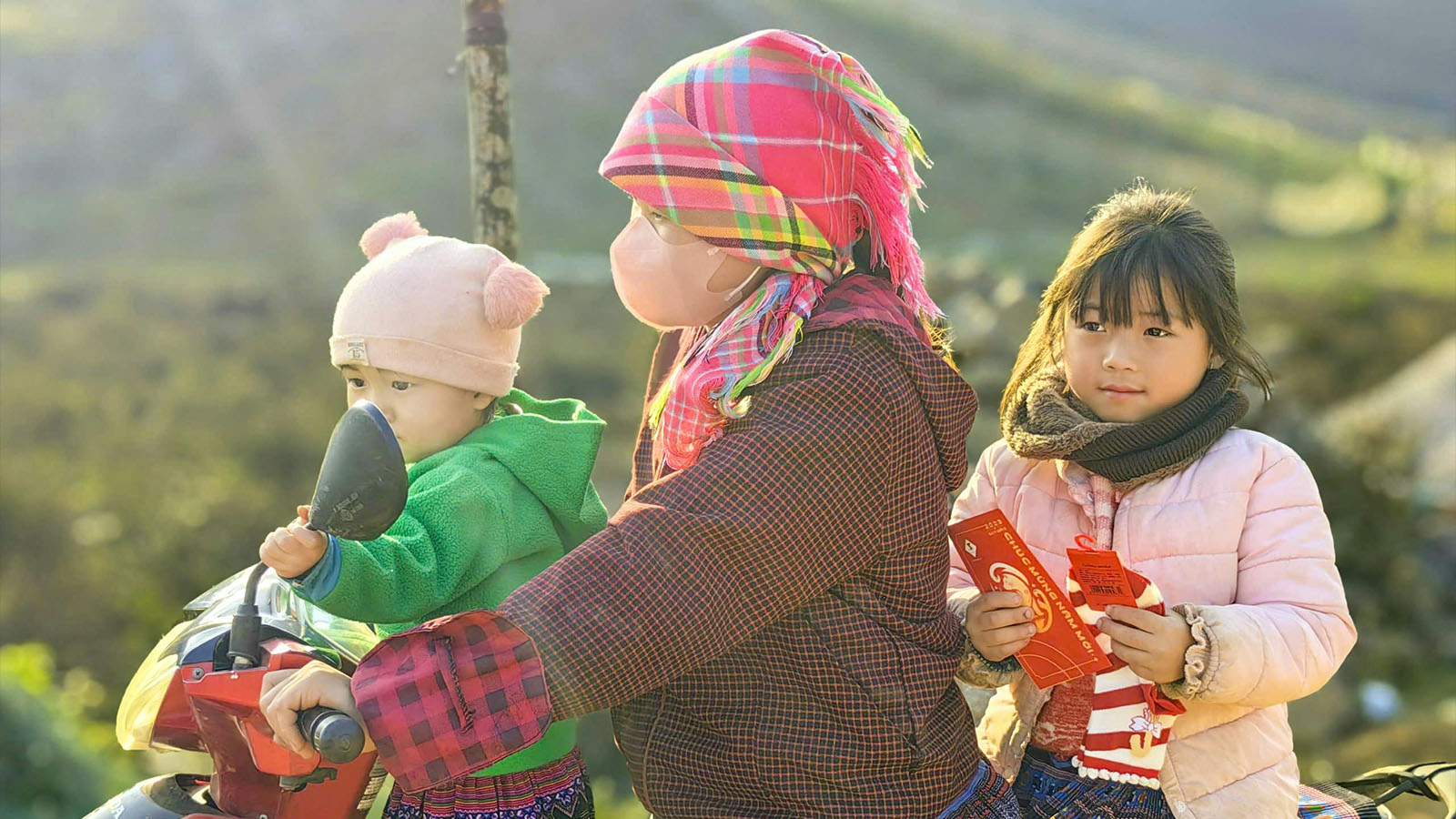





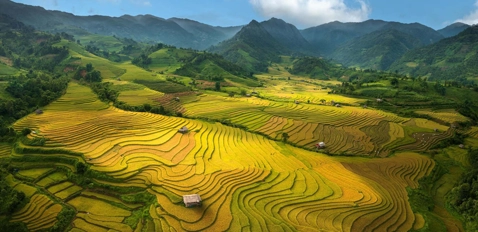
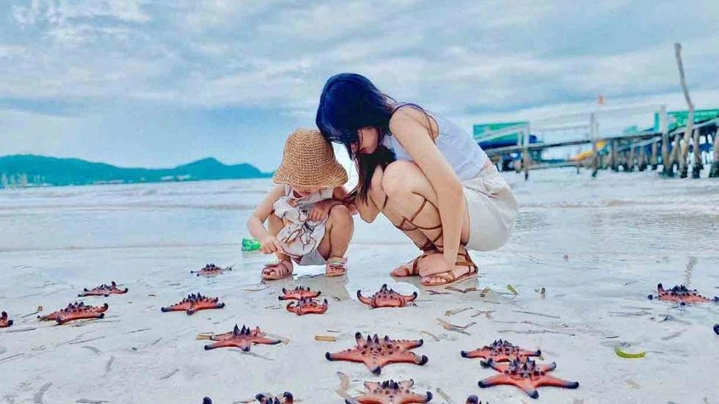









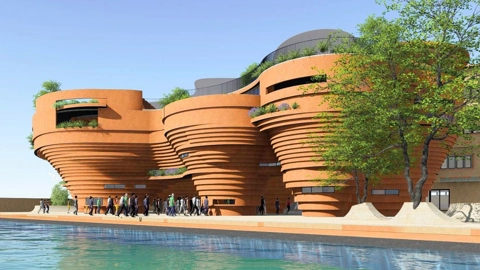


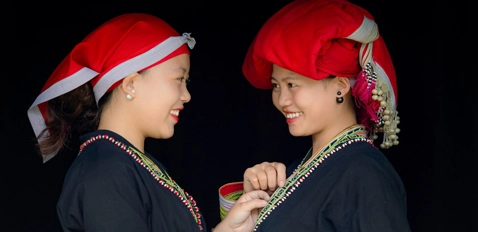













Comment